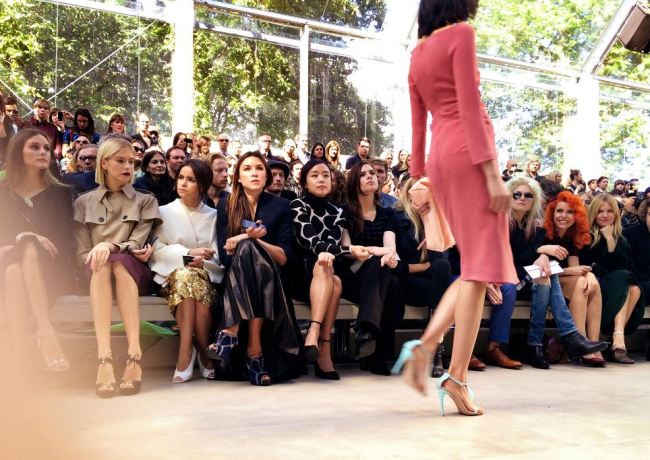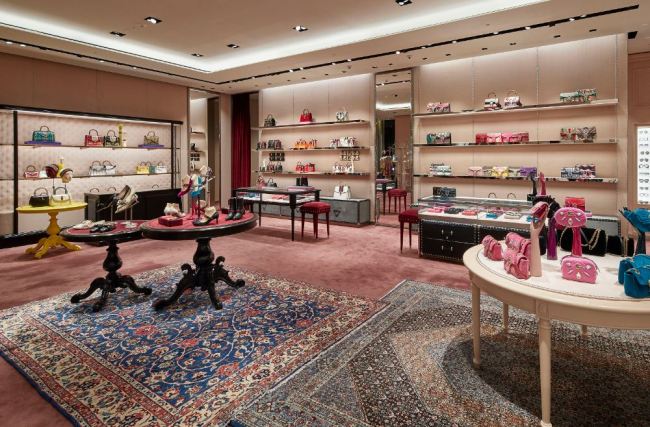Luxury European brands extend reach to Korean shoppers
More women are renting luxury items instead of paying hefty price tags
By Kim Yon-sePublished : Feb. 4, 2018 - 18:37
Recently more European luxury brands have been vigorously targeting the so-called millennials -- those born between the early 1980s and mid-1990s -- across the global market.
Since 2015 these high-end brands have been successful in targeting Korean consumers in their 20s and 30s with revamped designs and new marketing strategies, making good use out of their online stores.

A noteworthy trend is seen at Gucci, where new Chief Designer Alessandro Michele has conducted a drastic overhaul in product designs. Under his initiative, Gucci has been successful in carrying out a shift from its standard sleek style to a more colorful aesthetic by embroidering bees, snakes and tigers on main items, such as shoes and bags.
Though Gucci has not unveiled its detailed Korean sales figure, market insiders estimate that Korea’s young consumers have somewhat contributed to the Italian brand’s rapid growth in global sales.
According to Kering Group’s annual financial report, Gucci delivered another spectacular increase in revenue for the third quarter of 2017, up 49.4 percent on-year.
All product categories enjoyed double-digit growth, from Men’s and Women’s collections, and from established and new lines. Online sales posted (a marked) triple-digit growth.
In the local market, sneakers are regarded one of the few best items purchased by young Koreans. Despite the high price tag, which ranges between 700,000 won ($660) and 1 million won, a large portion of major online shopping malls reported that some youth-oriented products sold out.
The situation is different from past years when Gucci products had mainly appealed to traditionally faithful, middle-aged customers.

UK-based Burberry is also paying keen attention to the millennials. Fashion industry insiders share the view that its designs and colors have become livelier.
Over the past year, Burberry’s “See now Buy now” catchphrase has drawn wide attention worldwide, in which shoppers are allowed to purchase new products through the Burberry online store right after it appears on the runway. Apart from internet shopping, new collections are also available at the local flagship store in Dosan-daero, southern Seoul.
In a recent statement, its chief executive officer Marco Gobbetti said that “now is the right time for Burberry to implement the next phase of its transformation.”
He said: “By re-energizing our product and customer experience to establish our position firmly in luxury, we will play in the most rewarding, enduring segment of the market.”
Michel Phan, a professor of luxury marketing at the Emlyon Business School in France, was quoted by Reuters as saying that “young people in the fashion world don’t want to buy the same trench coat that their parents had.” Phan also said, “You want someone crazy to come in and break the mold.”
French powerhouse Louis Vuitton has also targeted young shoppers with its monogram series.
Korea’s mobile commerce company Tmon said that purchases among young shoppers of luxurious products have jumped, citing the latest sales data.
Over the past three months from October 2017 to January 2018, Tmon’s overall sales of sneakers from luxury brands like Gucci, Golden Goose, Valentino and Alexander McQueen increased by more than 60 percent, compared to the same period a year before.
In particular, the sharp sales increase was led by consumers in their 20s, with the segment sales shooting up 106 percent on a year-on-year basis.
A Tmon spokesman said the increase in sales could be attributed to the tendency of young consumers focusing on higher satisfaction.
For those who feel burdened by the high prices despite their desire for high-end European goods, there are rental services specializing in luxury goods in Seoul.
Data showed that a growing number of Korean women have signed up for a monthly membership to rent luxury bags and watches.
A salaried office worker in her early 30s said that she wanted to carry Chanel bags, but buying luxury goods was not easy as they are expensive and fashion trends change quickly. “As a substitute, rental services of luxury bags are appealing to me,” said the woman.
Via the rental services, shoppers can choose an item out of about 500 bags from more than 30 brands, such as Burberry, Chanel, Louis Vuitton and Bottega Veneta.
Watches from Hermes, Cartier and Omega are also available through rental services.
The growth of luxury goods rental services remains slow, but the trend is certainly increasing in Korea as it meets the needs of women keen to carry luxury bags and wear luxury watches at an affordable price.
Many Koreans view luxury goods as a tacit symbol of social status in a country where appearance is deemed important.
Start-up Reebons Korea offers luxury rentals to its members at prices that many young women find reasonable. Those who sign up for a membership can borrow any luxury bag or watch by paying less than 100,000 won ($93) a month, with only one item allowed at a time.
Retailers and shopping malls in the local market are closely watching the consumer sentiment among millennials, giving out a variety of projections in the future.
They agree that the current young shoppers do not hesitate to actively spend on their appearance and belongings.
“Even if their purchasing power is similar with previous generations, their consumption mind is totally different,” a market watcher said. “The sales gap could widen among high-end brands and their designs, at least in Korea.”
By Kim Yon-se (kys@heraldcorp.com)



















![[Today’s K-pop] BTS pop-up event to come to Seoul](http://res.heraldm.com/phpwas/restmb_idxmake.php?idx=642&simg=/content/image/2024/04/17/20240417050734_0.jpg&u=)